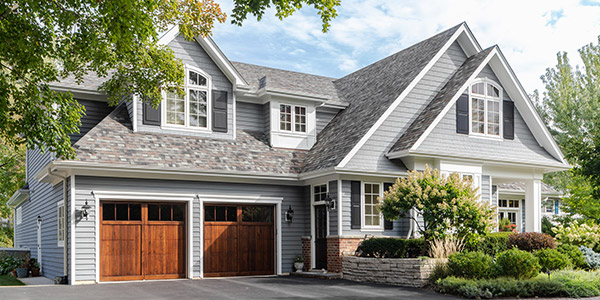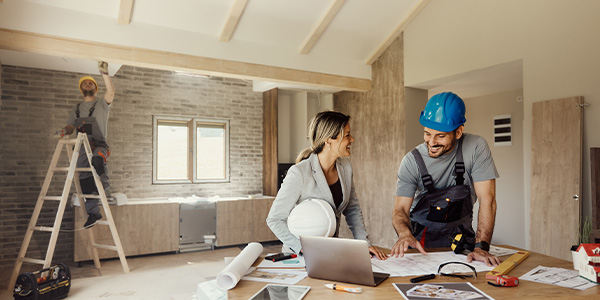Homeowners
Why Refinance a Home?
June 21, 2012
Why Refinance a Home?
Have your neighbors been talking about refinancing, because of today's low rates and now it's got you thinking? Do you want to pay off your mortgage before your retirement years? Or do you need some extra cash to pay for your child's tuition? There are many reasons why a homeowner might want to refinance, or pay off an existing mortgage with the proceeds from a new mortgage, so it's in your best interest to understand the different types of refinance opportunities available. You can also visit our mortgage calculator page.
Rate and Term Refinancing
Most often a homeowner will refinance to change the way they are currently paying off their mortgage, also called a rate and term refinance. In this case, the homeowner doesn't want to change their loan amount but rather lower their payment, build equity in their home faster, or switch from an Adjustable Rate Mortgage (ARM) to a Fixed Rate Mortgage.
1. Lower Your Payment
If you're a homeowner looking to lower your monthly mortgage payment, there are a few different ways you can go about achieving this.
One method would be to refinance to get a loan with a lower interest rate. You may be able to find a loan with a lower interest rate because of market conditions or a lender may offer you a better deal if your credit score or other financials have improved. For example, if you lower the interest rate on a $200,000, 30-year fixed rate mortgage from 7% to 5%, your monthly payment goes from $1330.60 to $1073.64.
Another method to lower your monthly payment would be to refinance to get a loan with a longer term, ie, the length of time for which you make mortgage payments. For example, if you refinance from a 15-year fixed-rate mortgage to a 30-year fixed-rate mortgage, your interest rate may increase, as longer-term mortgages generally have higher interest rates, but the result will be an overall decrease in your monthly payments. For example, if you increase the term from 15 years to 30 years on a $200,000 mortgage, and your interest rate goes from 5% to 7%, you still end up with a lower monthly payment, decreasing from $1581.59 to $1330.60. However, keep in mind that you end up paying more interest on the life of the loan when you increase the loan term.
2. Build Equity in Your Home Faster/Pay Off Your Loan Sooner/Save Money on Interest Costs
All of these goals are grouped because the method to go about achieving one goal - refinancing into a shorter-term mortgage, results in achieving these other goals as well. When you refinance into a shorter-term mortgage, for example from a 30-year fixed rate mortgage to a 15-year fixed rate mortgage, you reduce your total interest costs, because you are putting more of your monthly mortgage payment towards the principal. The effect is that you build equity in your home faster, and pay off your loan sooner.
Although shorter-term mortgages generally have lower interest rates, because you are putting more towards your principal, the monthly mortgage payment tends to be higher.
It's important to note, that you do not necessarily need to refinance to achieve these goals. You could always just pay a little extra on principal each month. Check to make sure there are no pre-payment penalties before you start doing this.
3. Switch from an Adjustable Rate Mortgage to a Fixed Rate Mortgage
Adjustable Rate Mortgages (ARM) offer a very low initial interest rate that lasts for a fixed period, for example, 5 years. After the fixed period expires, the interest rate will start to "adjust" to market interest rate changes. If you don't like the idea of a changing monthly mortgage payment, you may want to refinance into a fixed-rate mortgage. Especially if you think rates will begin to increase in the future, this may be a good option for you.
A fixed-rate mortgage offers a monthly payment that will never change. However, if your monthly payment includes escrow amounts for taxes and insurance, your payments may fluctuate due to changes in property taxes, insurance, etc. They also tend to have higher rates than ARMs, because with an ARM comes the age-old adage, high risk, high reward. High reward equals a lower initial interest rate, high risk equals the interest rate fluctuating after the initial fixed-rate period is over.
Cash-Out Refinancing
Sometimes a homeowner will want to take out a new mortgage with a larger principal than what they are currently carrying, and receive the difference in a cash payment. This is termed cash-out refinancing. It's taking the equity out of your home and turning it into cash.
So why might a homeowner need cash? There are many reasons, but here are the most common instances:
- To pay for a major expense such as a child's tuition, a new car, or to make home improvements.
- To consolidate debt, i.e. pay off your credit card that has a high interest rate and consolidate it with your mortgage that hopefully has a lower, more stable rate.
- To combine first and second mortgages
It's important to understand that when you take equity out of your home for cash, the loan is secured by your home. You also technically own less of your home than before. Be sure that you can afford the payments from your new loan, as you would not want to take the risk of losing your home should anything happen.
So there you have it, an overview of the different refinance opportunities out there, as well as why a homeowner might refinance. Please feel free to share with others who may be interested in refinancing and make your thoughts/opinions known by commenting below.





 Smart Moves Start Here.
Smart Moves Start Here.